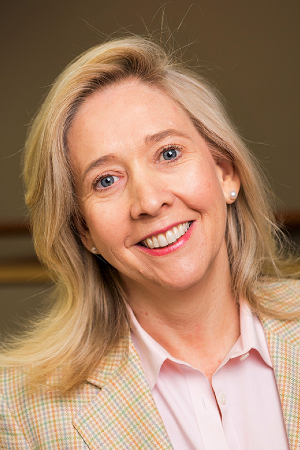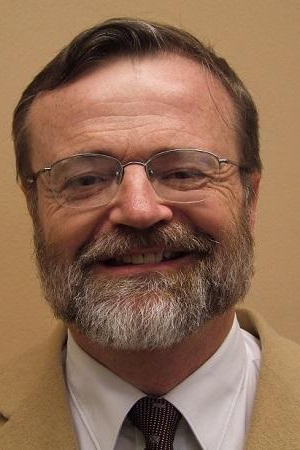By Alyssa Greenstein
As part of the ongoing “Spotlight on Sections” series, AALS sat down with the leadership of the Section on International Human Rights for a Q&A.
The Section on International Human Rights promotes the communication of ideas, interests, and activities among members and makes recommendations to the Association on matters of interest in the teaching and improvement of the law relating to international human rights.
Chair: Warren Binford, University of Colorado Law School
Chair-Elect: Thomas M. McDonnell, Pace University Elisabeth Haub School of Law


Warren Binford: I first got involved as a junior professor for several reasons: I was looking for a community who were doing similar work in the human rights of children; I was looking for scholarly frameworks to guide my own scholarship in the area; I was looking for mentors and role models.
I became involved with leadership once I was a tenured mid-level professor. At first, my goal was to provide service to the AALS community. But once you get involved with leadership, you start to develop very close, collaborative relationships and friendships with other members. As you move to more senior officer roles, and actually get to plan programming and have an influence both on the section and AALS overall, that’s very exciting.
Thomas McDonnell: My journey was similar: my focus had been in international and human rights law. I became active in Amnesty International and, early in my career, I wrote a significant article on international law as interpreted by U.S. courts, which enabled me to teach in the area and further inspired me to move my scholarship more deeply into international law, including human rights and humanitarian law. I found AALS to be a very supportive community. I was fortunate to be the chair of the International Law section before I became chair of this one.
Leadership solidifies your relationship to your organization. You can contribute by framing what your section is doing—by getting your ideas out there to the section and then hopefully the entire organization. I think most of us go into teaching because we want to advance justice as we see it, and by being active in leadership, we are better equipped to do that.
WB: We have a comparatively large, inclusive executive committee that is made up of the four officers (treasurer, secretary, chair-elect, and chair) as well as others who would like to be involved in decision-making but do not want to hold officer positions. People customarily move up through those officer roles, which ensures that by the time someone becomes the chair, they are familiar with how the section works, what the responsibilities are at each level, what the programs have been in the past, and the direction the section is moving in. They can build on the past and take it to the next level in the future.
TM: Most of our members are professors who teach international law, international human rights, or both. There are a number of professors and other people who teach law but are not professors, who are just interested in human rights. Our section has a broader base than only international human rights law professors and instructors. I should add that international human rights law is attracting the attention of scholars in a host of fields, from, among others, criminal law, civil rights, environmental law, and family law.
WB: We’re organizing a webinar this November on police accountability and human rights in partnership with New England Law, and are exploring the possibility of doing a second webinar. We are also looking at starting an awards program this year.
In the past year, AALS has significantly increased the opportunity for year-round offerings and more support online. The pandemic has been a blessing in that way—certainly, I’ve seen a significant amount of support for year-round programming. The section is trying to respond to that opportunity.
TM: I agree with Warren. One of the few advantages of the pandemic is that it has opened people’s eyes to the potential of Zoom and other remote teaching and conference opportunities. We’ll try to take advantage of that as well.
WB: We have three programs planned. The main one is about climate stability and human rights, trying to put the climate crisis in the context of the international legal framework. The consequences of global warming are impacting peoples’ lives in fundamental ways. There are lawsuits, such as the Juliana case, that assert that not actively stopping climate warming and supporting industries that contribute to climate warming violates human rights—in particular, the rights of children. We’re partnering with the Sections on Natural Resources and Energy Law and Children and the Law for that program.
Additionally, we usually have a New Voices in International Human Rights panel which focuses on giving junior pretenured professors an opportunity to present their work and get feedback from more senior members of the section. Finally, we have also organized a pedagogical panel which looks at teaching human rights using experiential methods, called “The Agony and Ecstasy of Teaching Human Rights in the Field,” that will look at clinical teaching and simulation and tries to support robust, hands-on methods of teaching human rights.
TM: This year’s set of programs is very robust. The New Voices session is a great opportunity for new scholars. I have enjoyed participating in the New Voices programs through the International Law Section (which typically co-sponsors with the International Human Rights Law Section). AALS as a whole has many new voices programs that I’ve found to be helpful and insightful, generally speaking.
Our other programs will be quite interesting, too. Climate change is a major issue. Twenty or 30 years ago, some scoffed at the idea that the environment had anything to do with human rights and said these were two distinct fields. We’ve seen a growing convergence between environmental law and human rights law. We are recognizing climate change as one of the existential human rights issues of the day.
TM: Start by looking at our calls for papers. We have two this year: one for the New Voices session and one for the panel on climate stability. Another way to get involved is to attend some of the programs at the Annual Meeting or one of our upcoming webinars, to see if you are interested in the types of questions being asked, the research being done, the community, and the people who are actively participating in the community. If that is something you’d like to devote a number of hours to, you could then, among other possibilities, join the executive committee, help organize panels and webinars, or participate in reviewing the paper submissions.
I think our section is very welcoming of new faculty and others who would like to participate. Often, there is only one, or maybe two faculty at a law school teaching international law and/or international human rights. It’s helpful to have other scholars who are interested in the same work, who might have ideas about teaching, or with whom you might share a draft. I encourage anyone interested in this area to join us and participate.
WB: As a junior professor, I came into the section somewhat intimidated by the people who were already the established human rights scholars in the law school community. Going to some of the programs and meeting the people who were in leadership positions in the section helped me to realize that this is an incredibly warm, supportive, and welcoming section. That’s one of the reasons why I decided to make it one of my core sections, out of the half-dozen or so that I visited, all of which were wonderful in their own way. I make a point at every AALS Annual Meeting to attend some International Human Rights programming both because of how interesting the topics are and because of how warm and inclusive the community is.
TM: Unfortunately, there have been serious violations of human rights law because of COVID. For example, some countries have closed their borders to asylum seekers and refugees. I think the pandemic has set us back in many other ways as well. On the other hand, the pandemic has also brought attention to disparities. In the United States, people of color have contracted Covid and perished from it at far higher rates than others. The Black Lives Matter movement, among others, has helped raise awareness of systemic discrimination which we hope will lead to positive change in governmental policy and practice. In sum, I think there have been steps forward and steps backward. The pandemic has created a heightened consciousness about international human rights, and that is a major positive change.
WB: We are co-sponsoring the program “Did Democracy Stumble? Pandemic Lessons from Around the Globe” with the Comparative Law section at the upcoming Annual Meeting. Some of these questions will be addressed in that program.
WB: Three of the programs we’re involved in this year relate directly to that. The first one, our webinar in November, is on police accountability—specifically trying to address the human rights implications of the disparate impact of law enforcement and targeting (conscious or unconscious) of certain people.
The second program is “State Responsibility to Address Racism,” which we are co-sponsoring with the International Law Section at the Annual Meeting. That program will cover questions about the role of government in trying to address these issues. As Professor McDonnell was just saying, racism isn’t just related to issues with law enforcement. For example, we see much higher rates of COVID infection in certain populations, so the state’s responsibility to address racism is also in regard to public health. Or the climate crisis: we know that certain communities both within the United States and around the world are impacted more by climate change than others and that these communities tend to have a lower socioeconomic status within the global society. So, even our climate change panel addresses racial disparities.
TM: Racism is, in a certain sense, the human rights issue of the current age. I do a lot of work on refugees and immigration. I think, for example, the former President would not have objected to refugees from Ireland or Germany, but certainly rejected refugees from the global south. This is a matter of race, ethnicity, and nationality—immutable characteristics—and is a major international human rights law concern.
The problem is not limited to the United States, but is worldwide. Virtually every international human rights body is working very hard to highlight what is going on and to urge action for the international community to take. We must come up with effective ways to root out racism, nativism, and tribalism. It’s a massive challenge.
TM: This is more a pedagogical question than a philosophical one for me. I have started to include realistic simulations in every human rights law class, as well as in my international law classes, with the idea of students having to argue on both sides of the issue, or sometimes negotiate to resolve the problem. I find that simulating real cases crystallizes in the students’ minds what international law is and how it works in practice. I came to this conclusion gradually, but I’ve found that simulations, a kind of active learning, are, at least for me, an important pedagogical innovation.
WB: When I first started teaching the human rights of children, I was using more readings, student presentations, and case studies. My clinical work was based more locally. As I became more confident as a teacher and more embedded in the international human rights community, I had more opportunities to do fieldwork and to do filings with the United Nations, for example, or to take students to the U.S.-Mexican border. Moving out of the classroom and out of the immediate community and adding in more remote opportunities, meaning in-person field research and advocacy, to the teaching component is an important change I have made to my course.